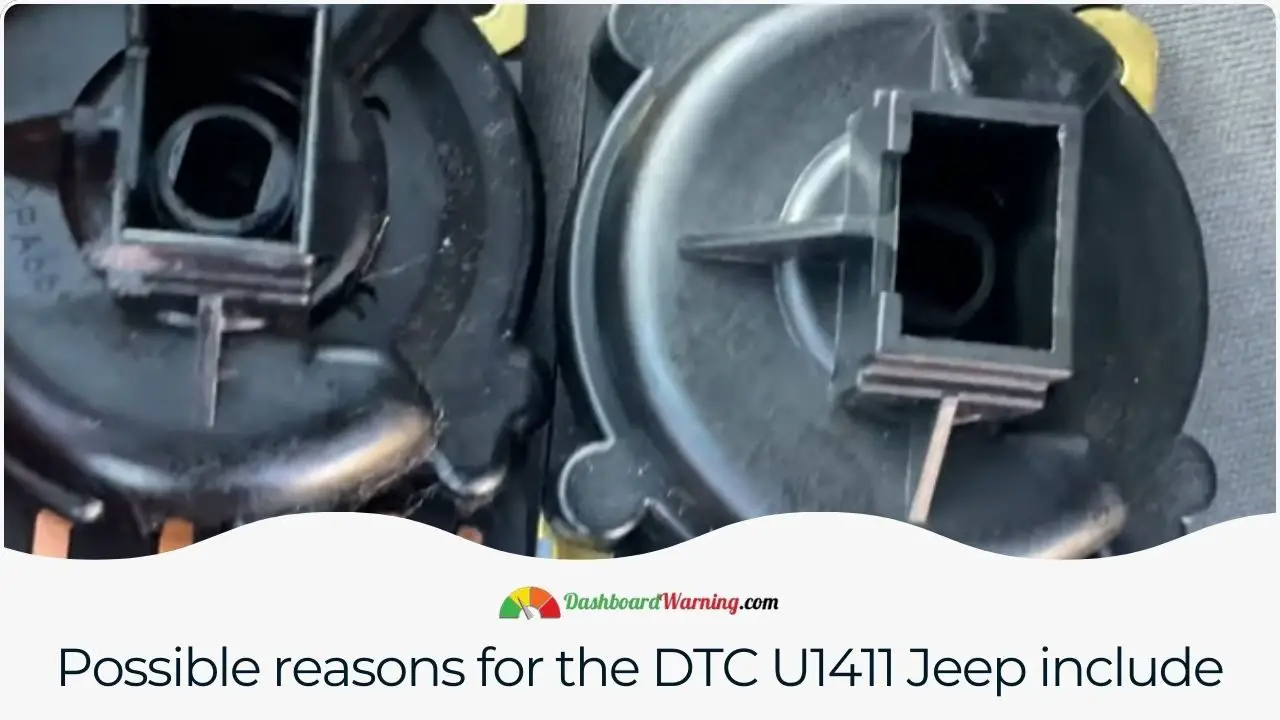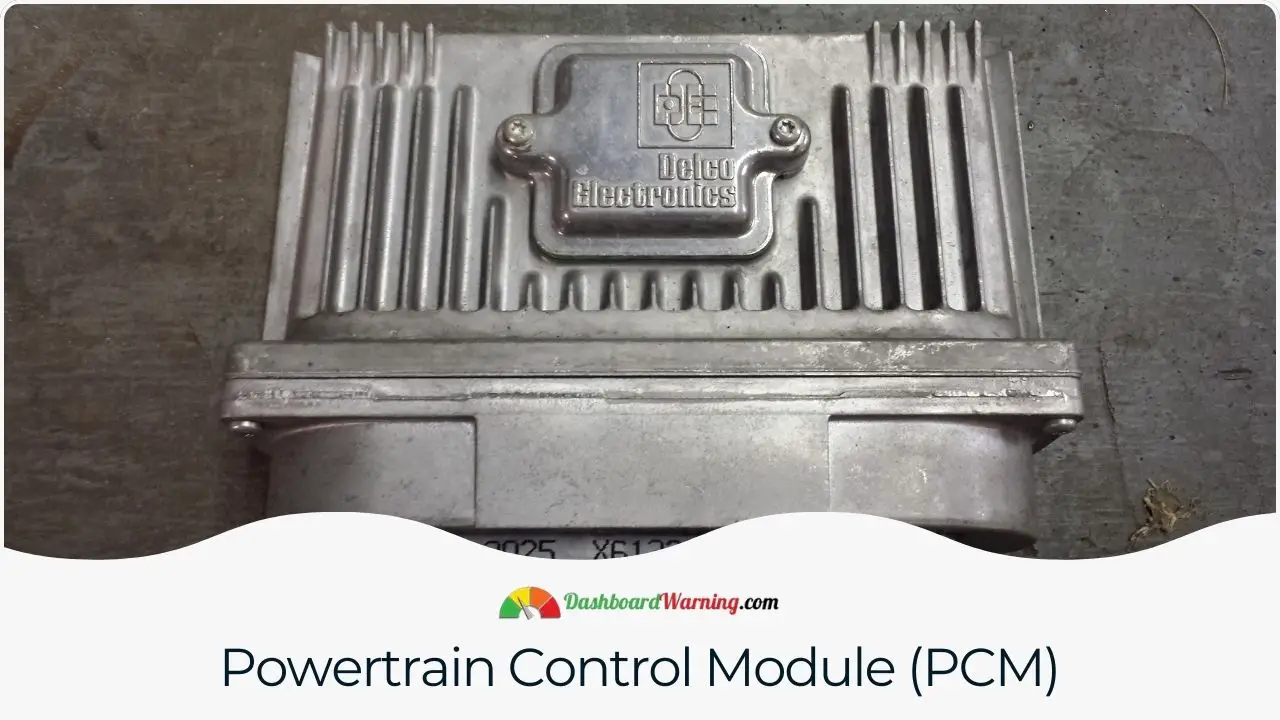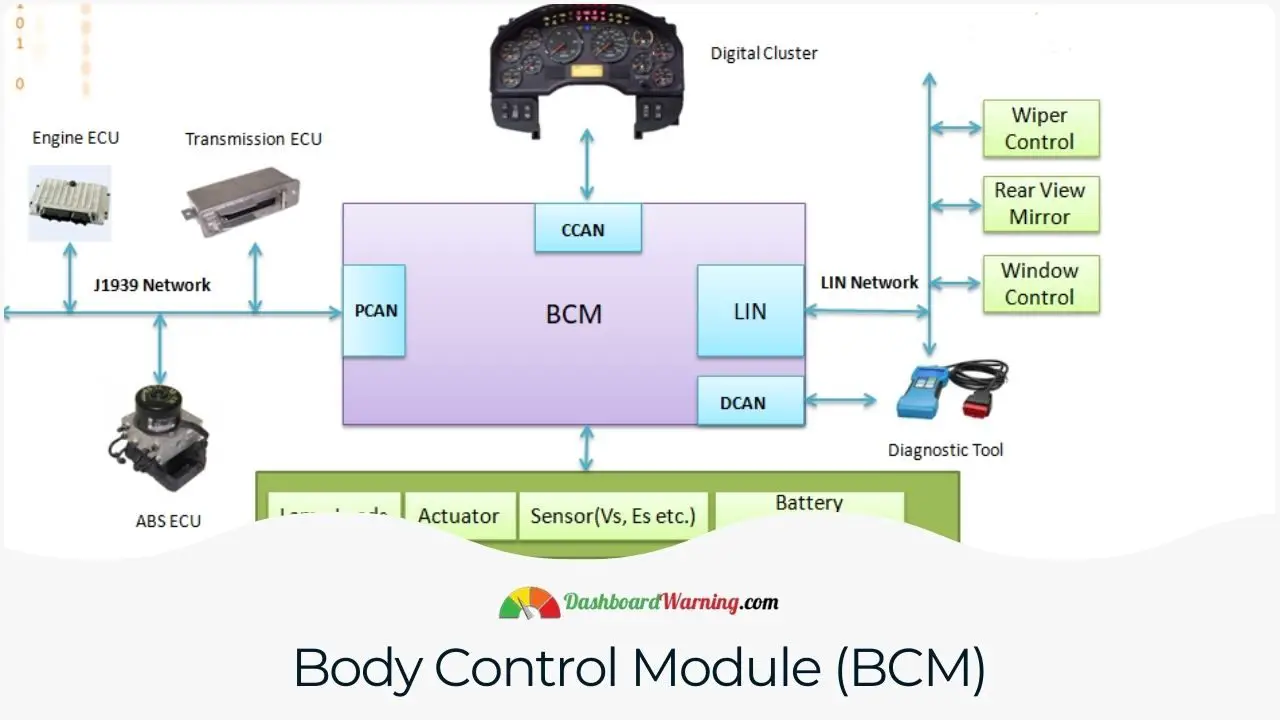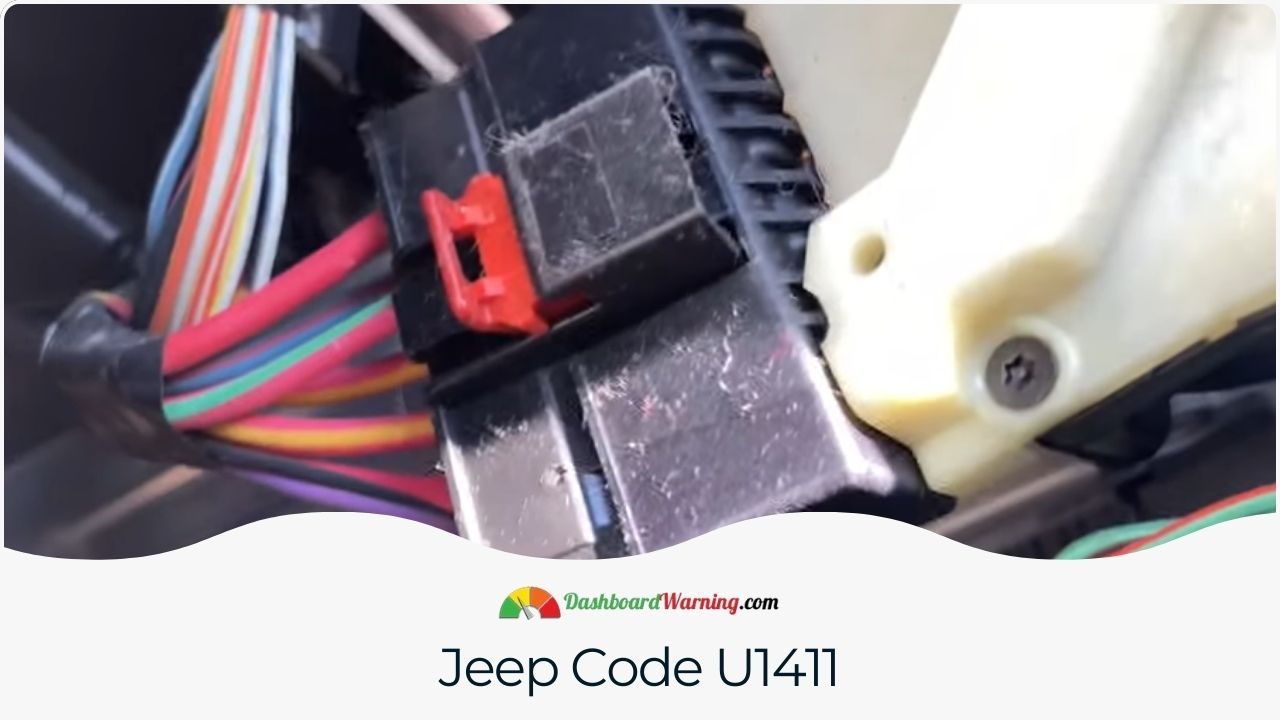The signal from the Fuel Level Sensor is fed directly into the Body Control Module (BCM). This BCM then relays the fuel level information to the Powertrain Control Module (PCM) through the CAN C bus.
Possible reasons for the DTC U1411 Jeep include

- A malfunctioning Body Control Module (BCM).
- A wiring harness issue with the BCM, such as an open or short circuit.
- Poor electrical connections in the BCM circuit.
- A defective Powertrain Control Module (PCM).
How to Fix the DTC U1411 Jeep Code?

- Start by examining the 'Possible Causes' mentioned above.
- Conduct a thorough inspection of the wiring harness and connectors involved.
- Look for damaged components and check connector pins for broken, bent, pushed out, or corroded issues.
The cost for diagnosing the U1411 Jeep code typically involves 1.0 hours of labor. However, this can vary based on location, vehicle make and model, and engine type. Auto repair shops generally charge between $75 and $150 per hour.
💥See also: Chrysler Pacifica Auto Start Stop Warning Light
What are the possible symptoms of the Jeep Code U1411?
- The activation of the Engine Light (or Service Engine Soon Warning Light).
What Does the Jeep Code U1411 Mean?
The BCM sends a fuel volume message to the PCM via the Controller Area Network (CAN) C bus. This Diagnostic Trouble Code (DTC) is triggered when the fuel volume message received by the PCM seems implausible. The circuit undergoes continuous monitoring.
Powertrain Control Module (PCM)

The PCM, or Powertrain Control Module, is a crucial computer in a vehicle that manages the engine, transmission, and other components. It gathers data from various sensors across the car and uses this information to make decisions about powertrain operations. For instance, the PCM adjusts the fuel mixture, spark timing, and transmission shift points to enhance performance and reduce emissions.
The PCM is vital for modern vehicles, playing a key role in ensuring the powertrain's safe and efficient functioning. Failure of the PCM can lead to various issues like engine misfires, poor fuel economy, and emission problems.
Functions of the PCM include:
- Regulating the amount of fuel injected into the engine cylinders.
- Timing the spark plugs accurately.
- Managing the air-fuel ratio.
- Modifying transmission shift points.
- Monitoring engine performance and emissions.
- Storing diagnostic trouble codes (DTCs).
The PCM is a sophisticated and integral part of modern vehicles, crucial for their safe and efficient functioning. If you're concerned about your vehicle's PCM, it's advisable to consult a qualified mechanic.
Signs of potential PCM failure:
- Occurrence of engine misfires.
- Deterioration in fuel economy.
- Emission-related issues.
- The illumination of the check engine light.
- Problems with starting the vehicle.
If you encounter any of these symptoms, it's important to have your PCM checked by a professional mechanic promptly.
Body Control Module (BCM)

The Body Control Module (BCM), often called the 'body computer,' is an essential electronic control unit in automotive electronics. It oversees and manages various electronic features within a vehicle's body. Commonly, the BCM in a car is responsible for operating power windows, power mirrors, the air conditioning system, the immobilizer system, and central locking. It communicates with other onboard computers using the vehicle's bus system. The primary role of the BCM is to control load drivers, which activate relays. These relays then execute various functions in the vehicle, such as locking the doors, flashing turn signals in older cars, or adjusting the intensity of interior lighting. [1]
Was this page helpful?


More important content about Engine Codes
P2419 Code: Here's How to Solve It Fast
P0090 Code: Here's How to Solve It Fast
P1717 Code: Here's How to Solve It Fast
P0313 Code: Here's How to Solve It Fast
P1405 Code: Here's How to Solve It Fast
Tips and Advice
Porsche Cayenne Years To Avoid
Subaru Legacy Years To Avoid - 5 Worst Years
Pt Cruiser Years To Avoid
Use 5w30 instead of 0w20 - Advantages and Disadvantages
Tractor Dashboard Symbols And Meanings
Suzuki Sx4 Years To Avoid - 5 Worst Years